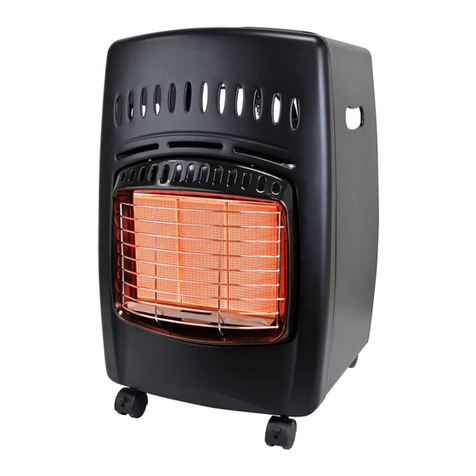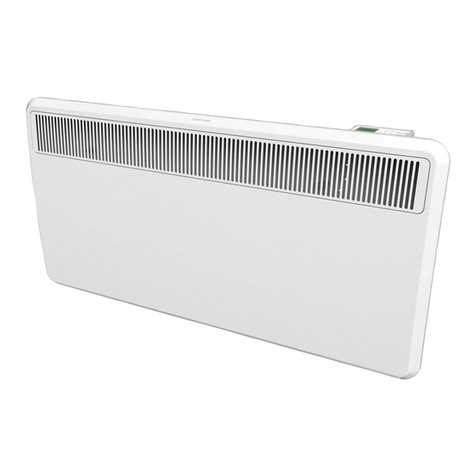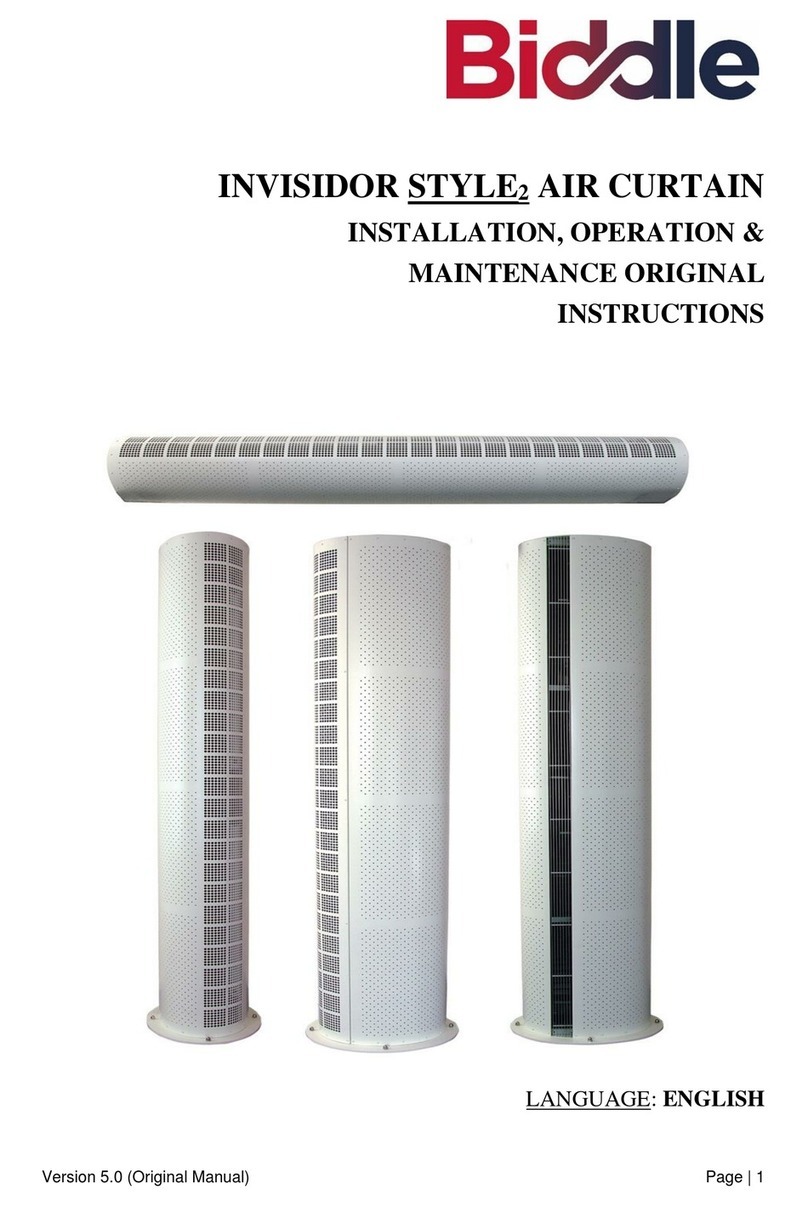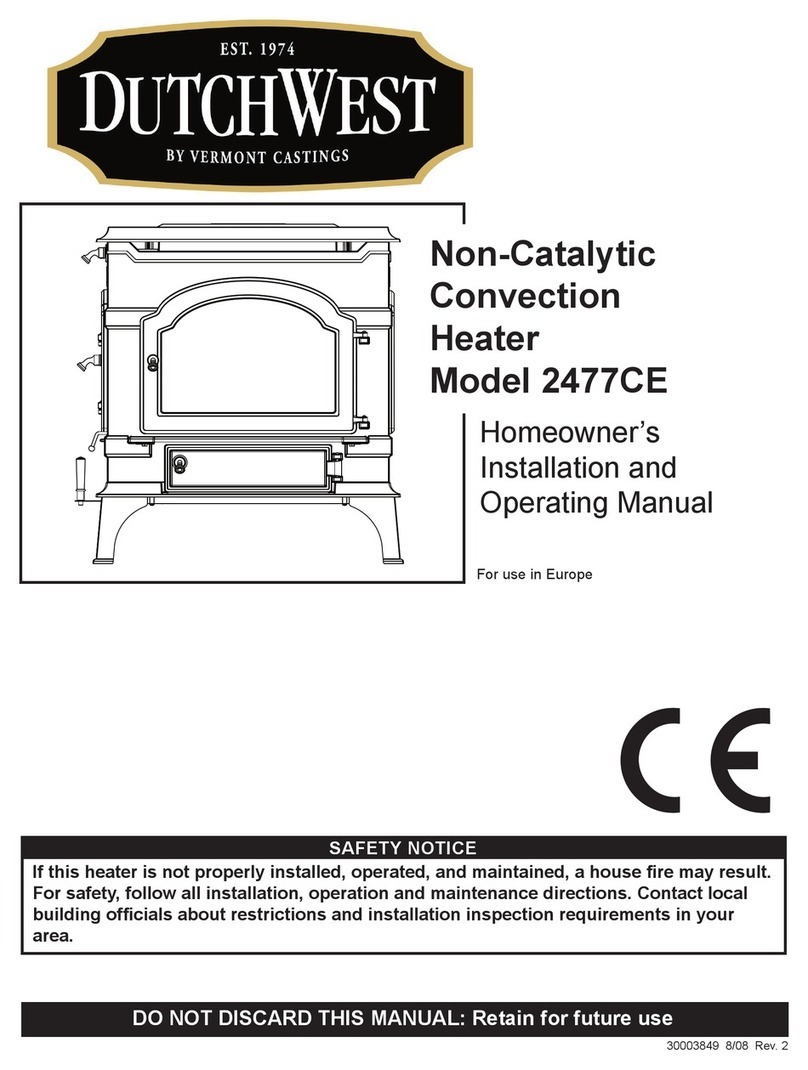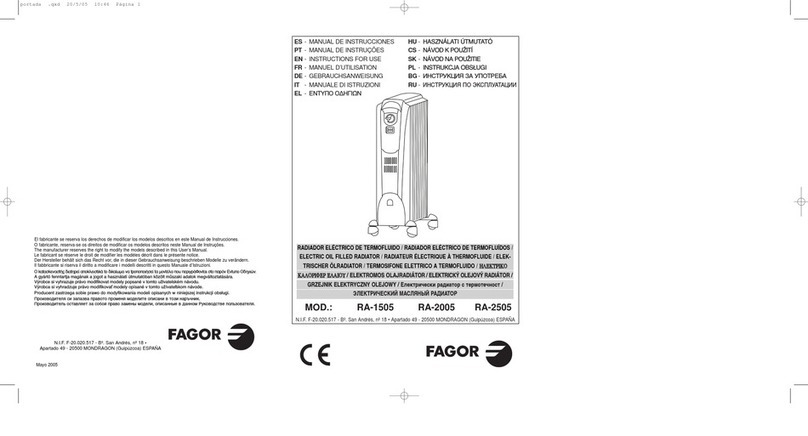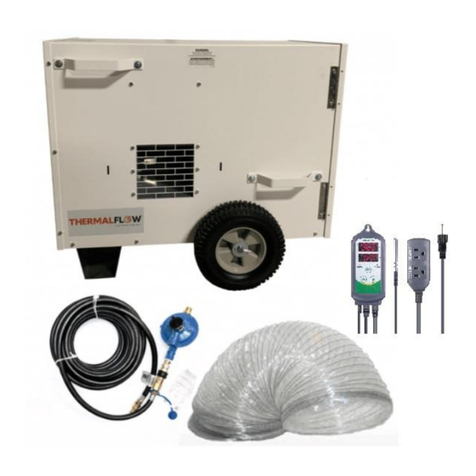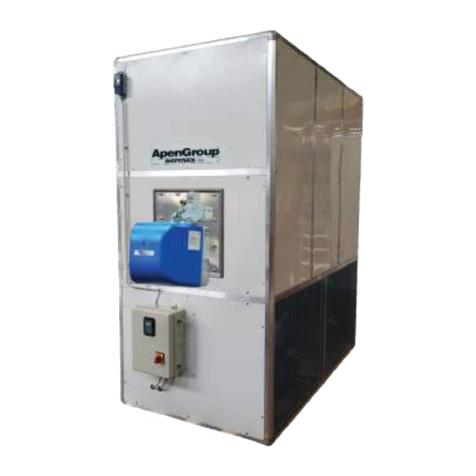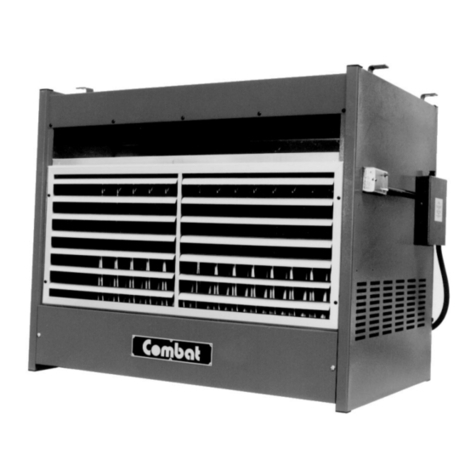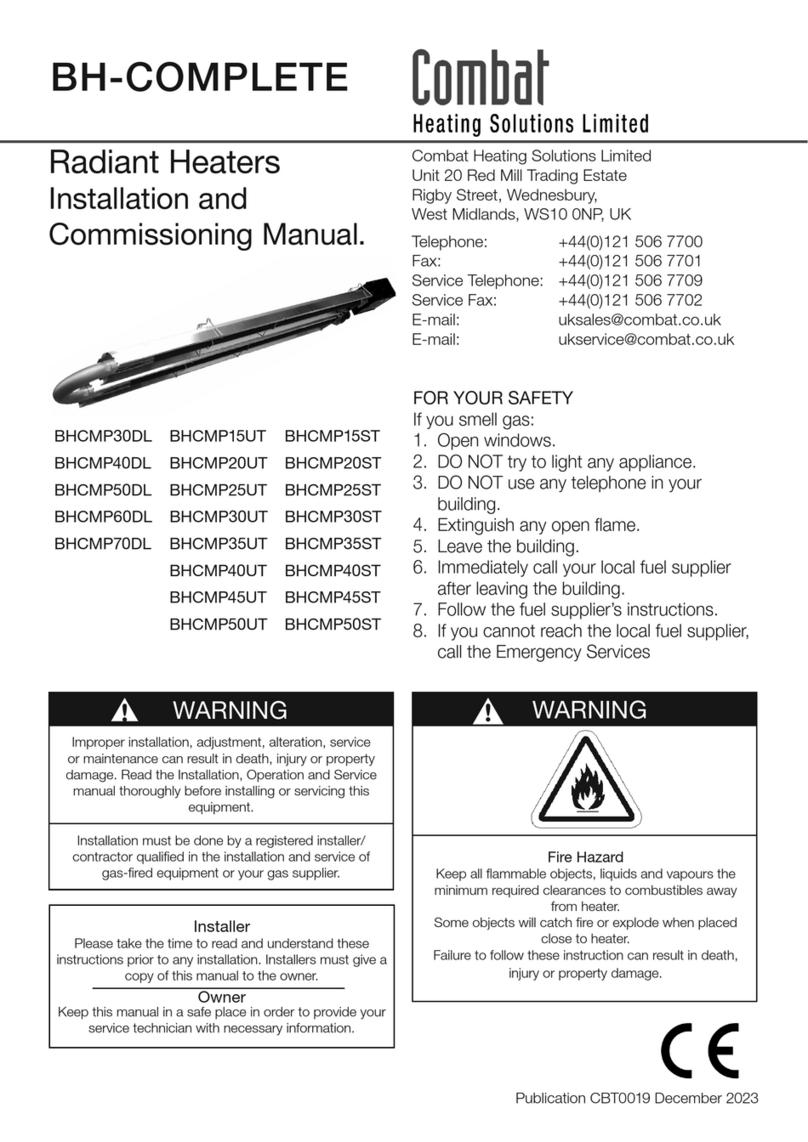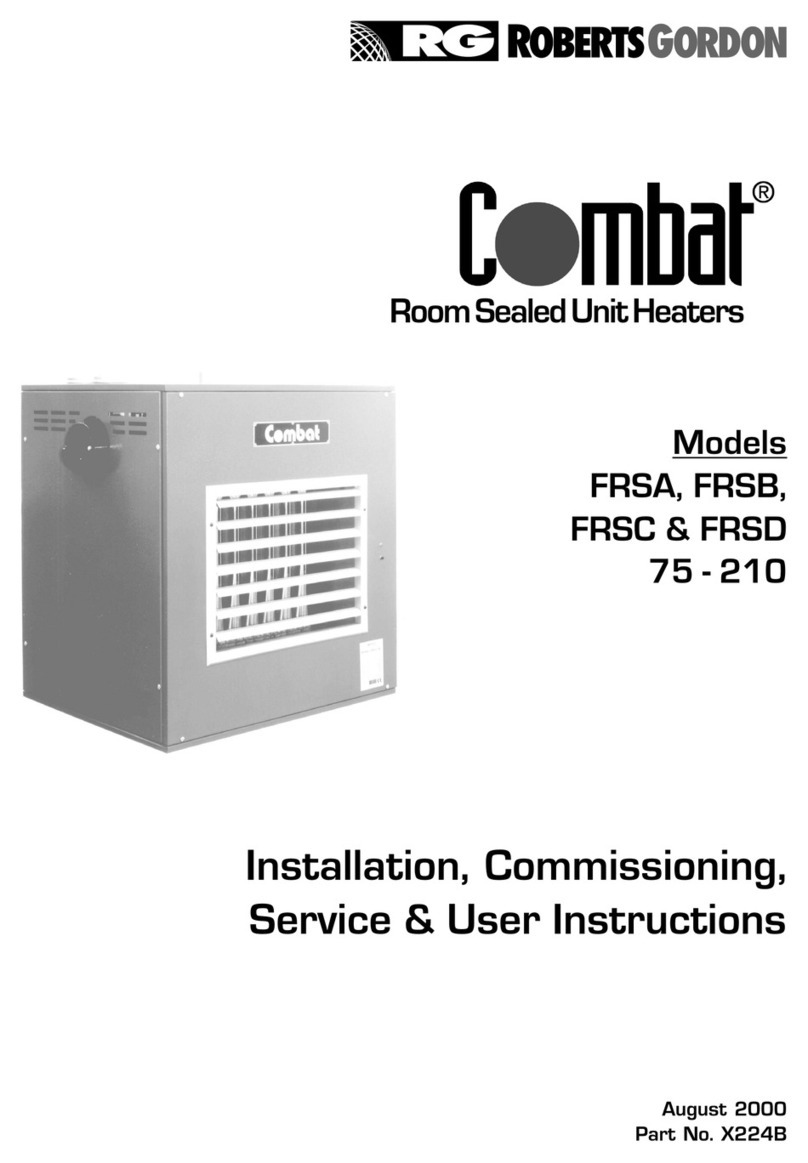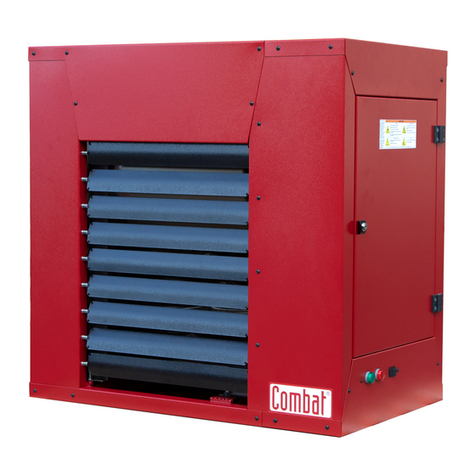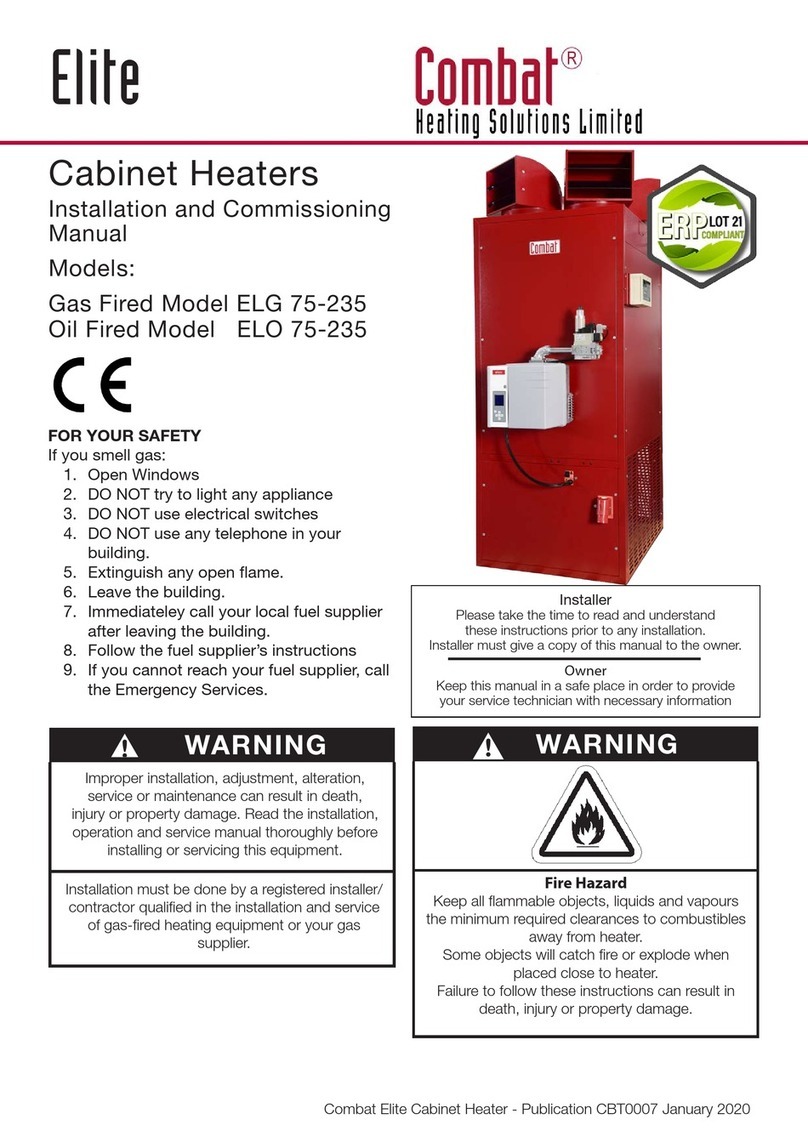
© 2017Combat HVAC Limited
All rights reserved. Nopartof this work covered bythe copyrights herein maybereproduced
or copied in any form or by any means - graphic, electronic, or mechanical, including
photocopying, recording, taping or information storage and retrieval systems - without
the written permission of Combat HVAC Limited.
Printed in U.K.
TABLE OF CONTENTS
SECTION 1: Heater Safety ...................................................... 2
1.1 Manpower Requirements ............................................. 2
1.2 Safety Labels and Their Placement ............................. 2
SECTION 2: Installer Responsibility ..................................... 4
2.1 Laminated Wall Plate ................................................... 4
2.2 Corrosive Chemicals .................................................... 4
2.3 National Standards and Applicable Regulations.......... 4
SECTION 3: Clearances to Combustibles............................. 5
3.1 Required Clearances to Combustibles......................... 5
SECTION 4: Critical Considerations ..................................... 7
4.1 Ventilation .................................................................... 7
4.2 Gas Supply .................................................................. 7
4.3 Electrical Supply .......................................................... 7
4.4 Flue.............................................................................. 7
SECTION 5: Specifications .................................................... 8
5.1 CTUA .......................................................................... 8
5.2 CTUB, CTUC and CTUD ............................................. 9
5.3 General Technical Data Table ................................... 10
5.4 Technical Data Table .................................................. 11
SECTION 6: Heater Installation............................................ 12
6.1 General ...................................................................... 12
6.2 Basic Information....................................................... 12
6.3 Location and Suspension .......................................... 12
6.4 Handling .................................................................... 12
6.5 Suspension and Shelf Mounting................................ 12
SECTION 7: Flue Installation ............................................... 14
7. 1 F l ue Installation .......................................................... 14
7.2 Type C12, C32 & C62 Appliance..................................... 14
7.3 Type B22 Appliance ..................................................... 14
SECTION 8: Air Supply ......................................................... 16
8.1 Room Sealed Installation ........................................... 16
8.2 Open Flued Installation .............................................. 16
8.3 Building Ventilation .................................................... 16
8.4 Isolated Equipment Rooms........................................ 16
SECTION 9: Optional Heater Configurations...................... 17
9.1 Distribution Duct Work for CTUB, CTUC and CTUD
Heaters ...................................................................... 17
SECTION 10: Gas Pipe Work ................................................ 18
10.1 Connections ............................................................. 18
SECTION 11: Wiringand Electrical Information ................. 20
11.1 Electrical Supply ....................................................... 20
11.2 Remote Controls ....................................................... 20
11.3 CTUA Wiring Diagram (Models 75-115).................... 21
11.4 CTUB/C Wiring Diagram (Models 75-115)................ 22
11.5 CTUD Wiring Diagram (Models 75-115) ................... 23
11.6 CTUD External Motor Alternative Wiring & Optional
Thermostat/Time Switch............................................ 24
SECTION 12: Commissioning.............................................. 25
12.1 Pre-Commission Checks.......................................... 25
12.2 Gas Supply .............................................................. 25
12.3 Mechanical Checks .................................................. 25
12.4 Begin Commissioning .............................................. 26
12.5 Combustion Testing..................................................27
12.6 Turning Off the Heater..............................................27
12.7 External Controls......................................................28
12.8 Complete the Commissioning ..................................28
12.9 Instruction to the User..............................................28
SECTION 13: User Instructions............................................29
13.1 User Instructions ......................................................29
13.2 Heater Operation......................................................29
13.3 Common User Controls............................................30
13.4 Lighting Instructions .................................................30
13.5 Simple Fault Finding.................................................30
SECTION 14: Servicing.........................................................31
14.1 Servicing Instructions...............................................31
14.2 Burner Maintenance.................................................31
14.3 Fan/Motor Assembly Maintenance ...........................31
14.4 Heat Exchanger Maintenance ..................................32
14.5 Gas Control Valve Maintenance ...............................32
14.6 Flue Fan ...................................................................32
14.7 Maintenance Checklist .............................................32
SECTION 15: Conversion Between Gases ..........................34
15.1 General ....................................................................34
15.2 Burner Conversion ...................................................34
15.3 Gas Valves ...............................................................34
SECTION 16: Troubleshooting.............................................35
16.1 General ....................................................................36
16.2 Troubleshooting For Automatic Ignition Burner
Systems ...................................................................37
16.3 Troubleshooting for Flame Supervision System .......38
16.4 Troubleshooting for Solenoid Valves ........................38
SECTION 17: Removal and Replacement Parts..................39
17.1 Gas Valve..................................................................39
17.2 Burner Compartment................................................40
17.3 Ignition Electrode and Flame Probe..........................42
17.4 Flue Fan....................................................................43
17.5 Pressure Switch ........................................................44
17.6 Ignition Control..........................................................45
17.7 CTUA Axial Fan/Guard/Motor Assembly...................45
17.8 CTUB & CTUC Centrifugal Fan/Guard/Motor
Assembly ..................................................................45
17.9 Fan Data ...................................................................46

